April 15, 2025

The Marriage of Figaro explores themes of forgiveness and confinement through a Morocco-inspired style. I had the opportunity to tour the set with scenic designer Daniel Ruiz Bustos, who explained how, through a bit of stage magic, subtle details, and a deep understanding of the story and characters, he was able to bring the world of Figaro to life.
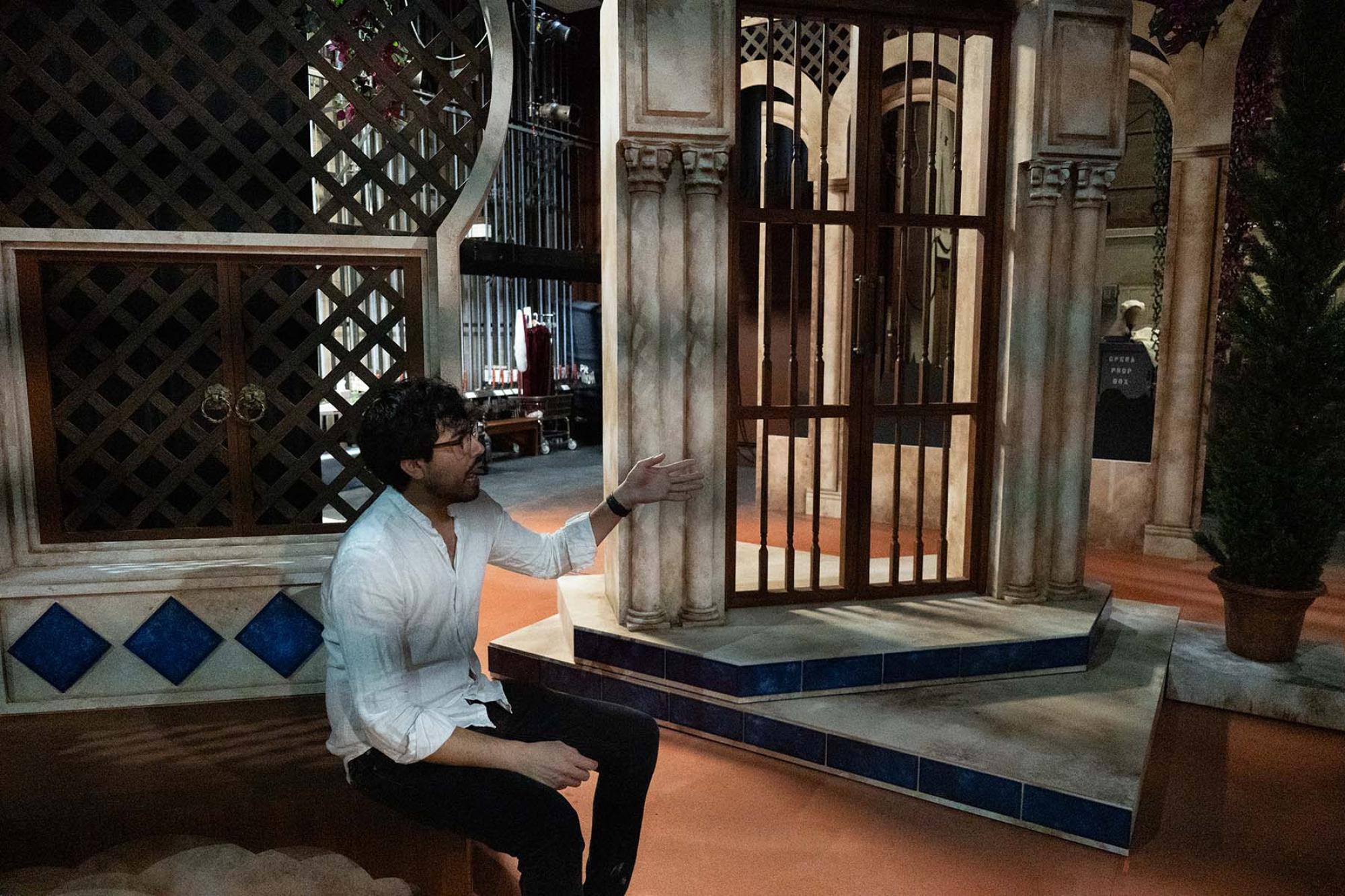
Scenic designer Daniel Ruiz Bustos sits backstage amongst the sets he created.
The most fundamental theme of the opera is forgiveness, a concept that can be challenging to represent through set design. But scenic designer Daniel Ruiz Bustos had a strong starting point. “The theme of forgiveness was very important at the end of Figaro, so I started going through art references to see what forgiveness looks like,” said Bustos. He began by examining religious imagery, which eventually evolved into architectural influences, blending religious elements with a Moorish aesthetic. These influences are evident throughout the set. Religious references are scattered across the design, from a black silhouette of a cityscape dotted with churches to the intricate styling of windows and doors. The overall aesthetic draws from a Moorish, Moroccan-inspired style, nodding to the historical connection between Seville and Morocco.
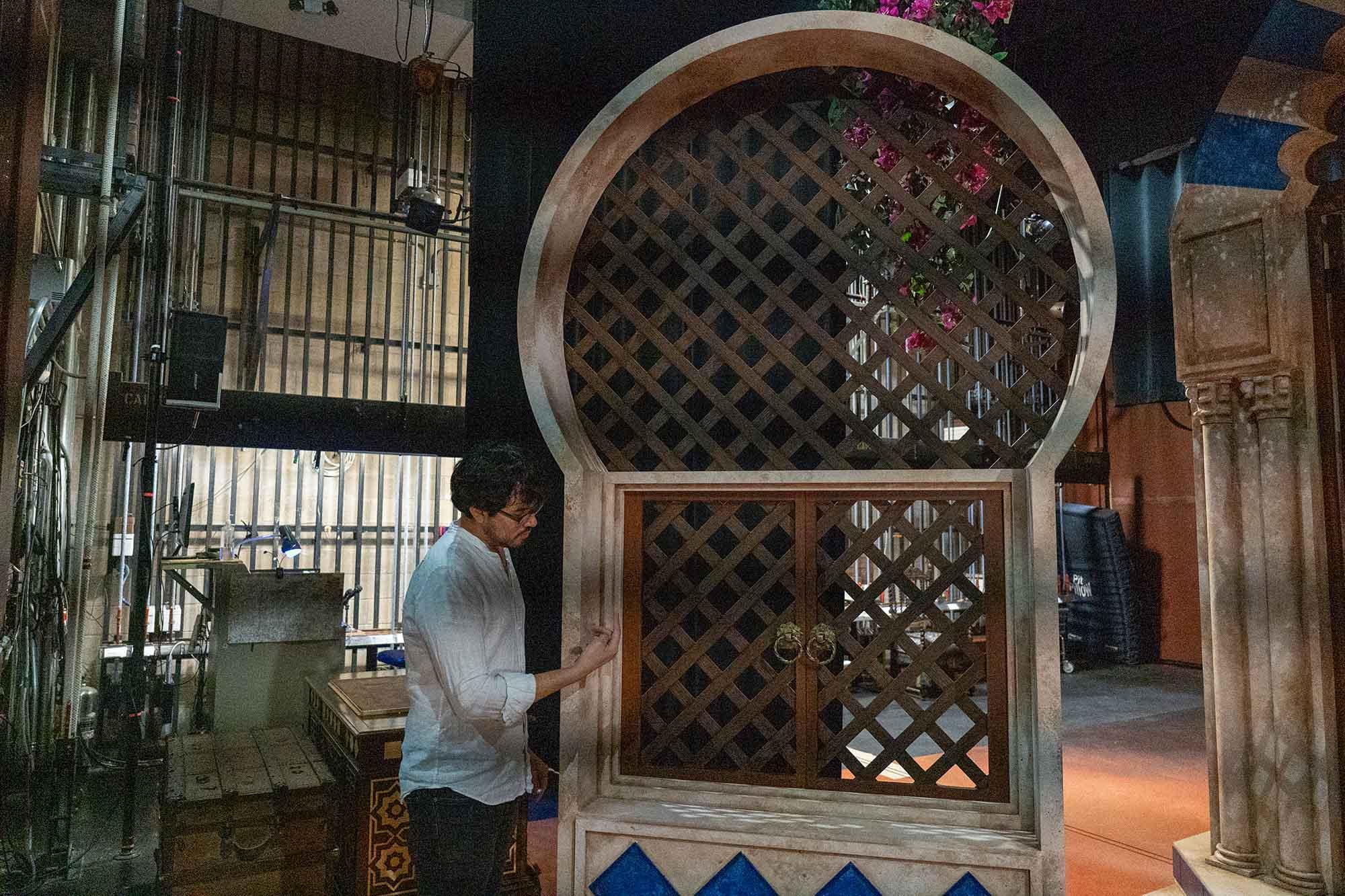
Daniel Ruiz Bustos shows a Moroccan-style window
The second major theme of the opera is confinement. While there are no literal prison bars or jail cells, the sense of entrapment is conveyed through the physical structure of the set. Doors and walls feel both physically and emotionally restrictive, allowing the audience to observe characters hidden behind doors, like a magician’s sleight of hand.
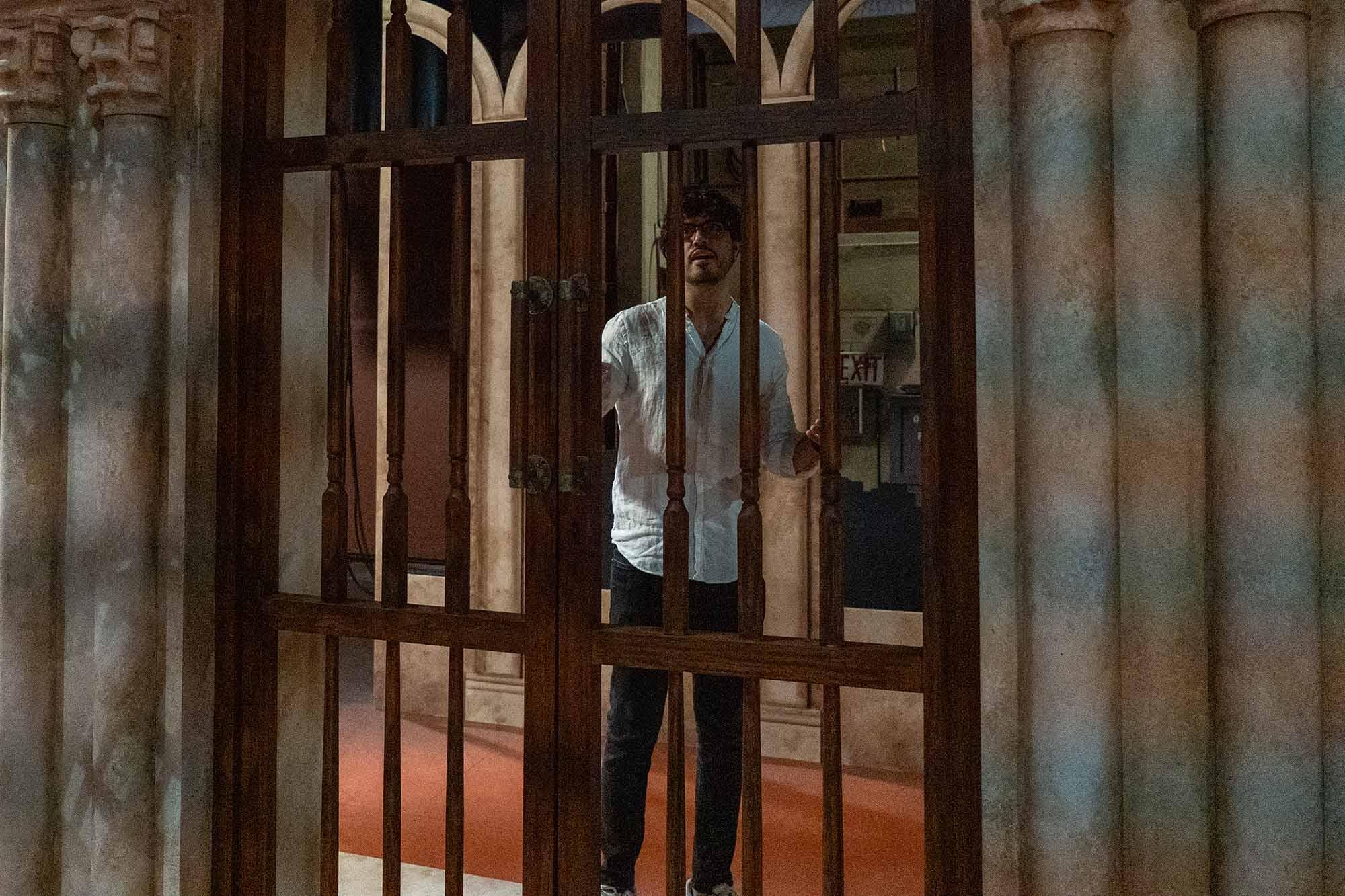
Daniel Ruiz Bustos standing behind a door in a Marriage of Figaro set
In fact, the opera features several “magic tricks” that may leave the audience in awe. The sets move on automated tracks, gliding across the stage thanks to cables hidden beneath it. They can rotate, turning a porch into a wall or shifting a window to another side, creating the illusion of entirely new spaces.
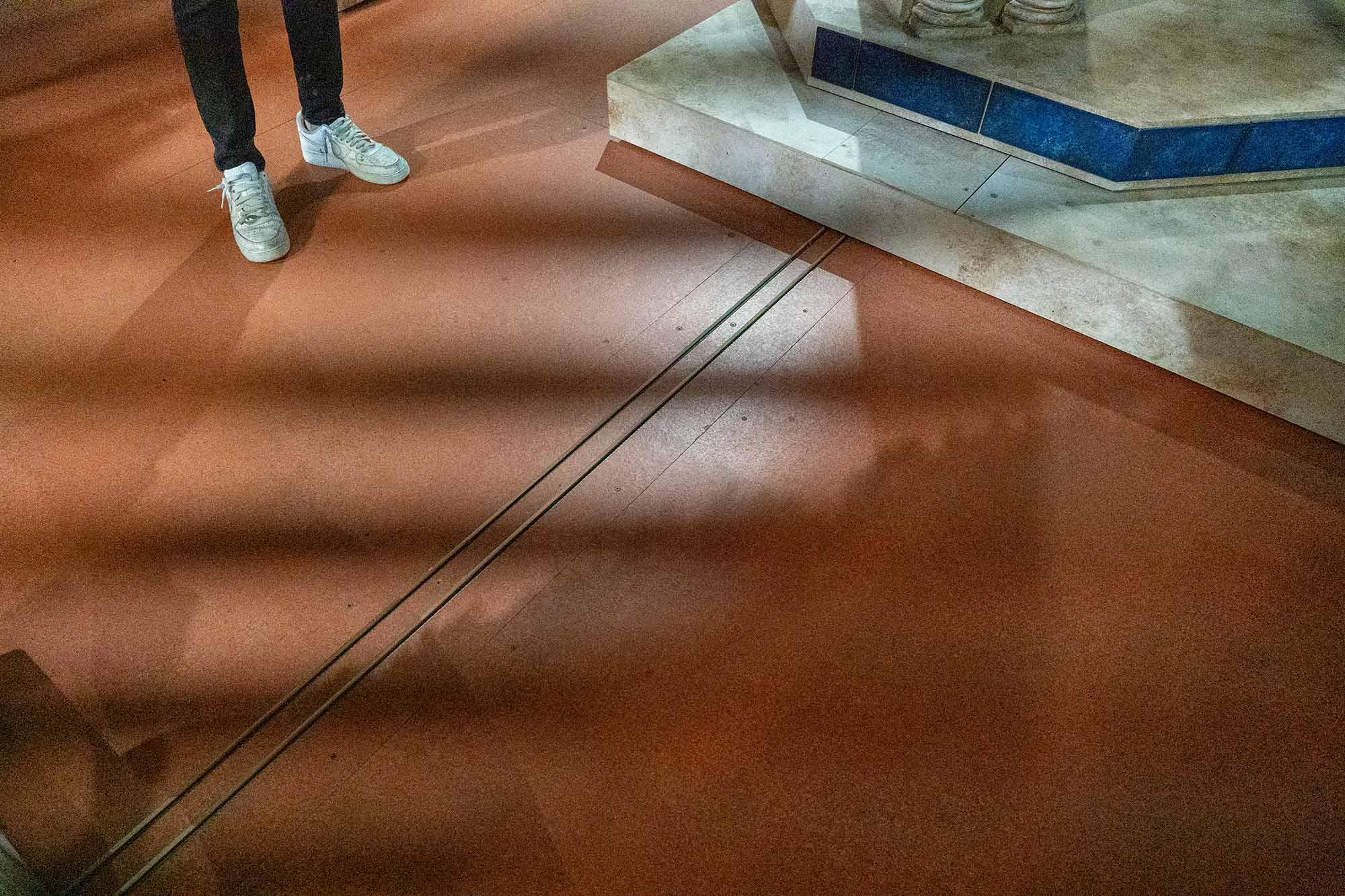
Cables are buried in the stage floor to move sets around
One especially clever moment occurs in the famous closet scene: Cherubino hides in a closet, only to be replaced by Susanna, who is then discovered by the Count. This moment presented logistical challenges: the closet is small, the costumes are bulky, and the space is tight. To make it work, the designers built a secret passage behind the closet, allowing the actors to seamlessly enter and exit without the audience ever noticing.
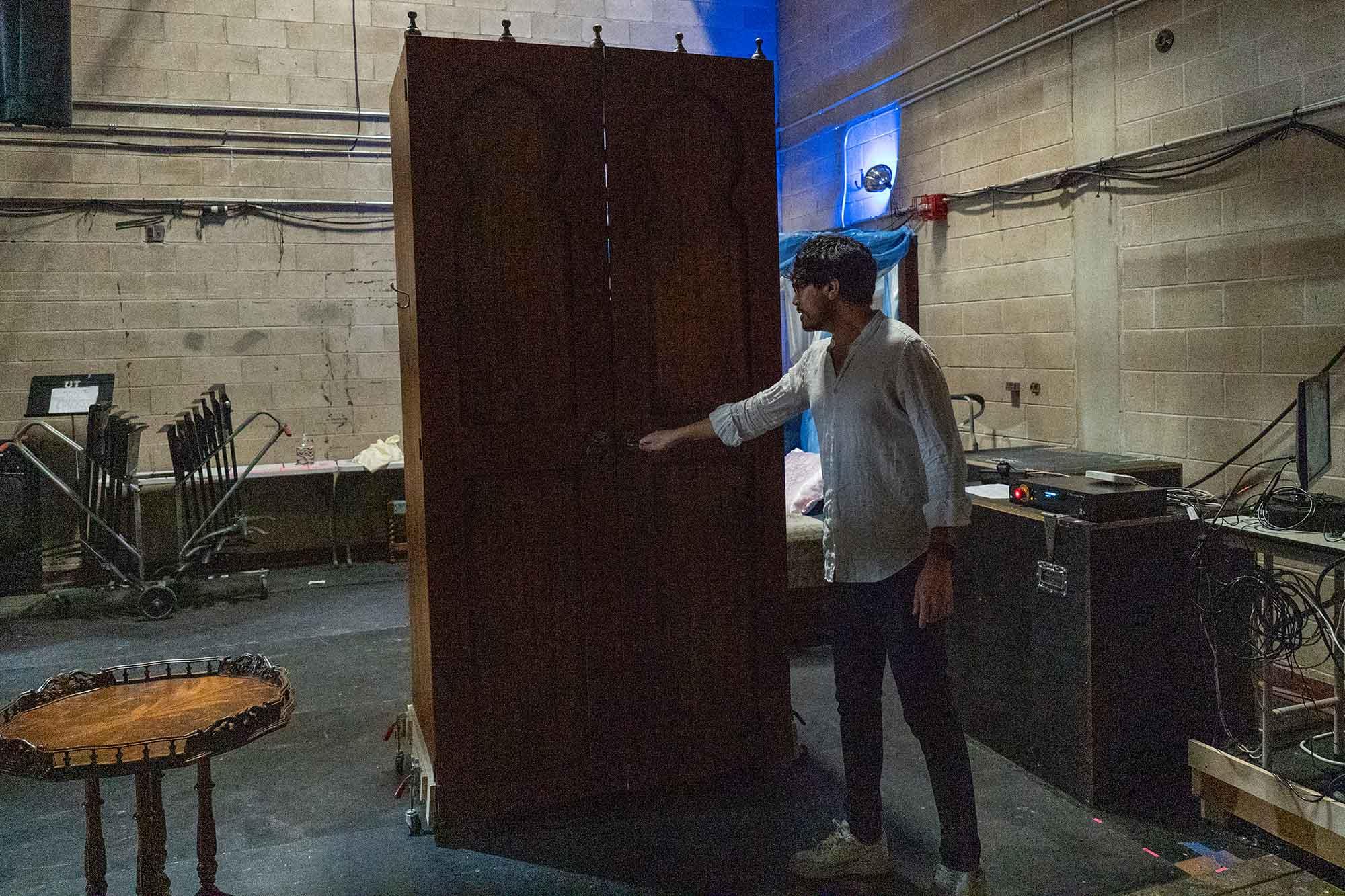
Daniel Ruiz Bustos shows off a closet with a secret passageway
While some set elements dazzle with spectacle, others work more subtly on a psychological level. One such detail is the bed, actually a daybed, the historical equivalent of a modern couch. In a key scene, the Countess, wearing a beautiful pink dress, lies on the bed, visibly distressed about her relationship with the Count. To reflect her emotional state, she covers herself with a dull, puke-green blanket — a visual metaphor for her inner turmoil. A sharp-eyed audience member might notice this understated yet powerful moment and feel her despair more deeply.
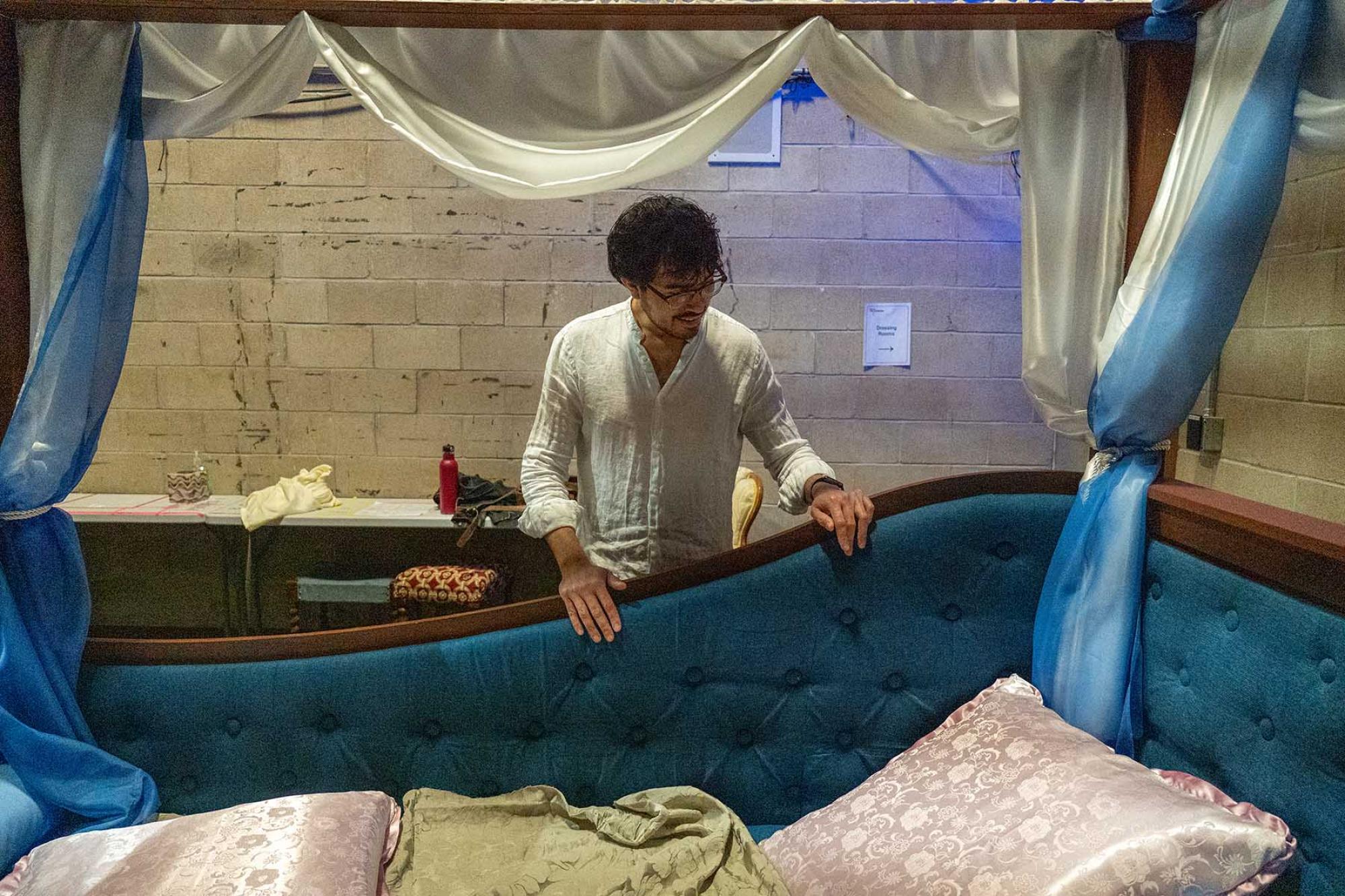
Daniel Ruiz Bustos shows off a bed and the sheets that represent depression
The Marriage of Figaro opens Thursday and is presented by the Butler Opera Center. Performance dates are:
Thursday, April 17 at 7:30 PM
Saturday, April 19 at 7:30 PM
Friday, April 25 at 7:30 PM
Sunday, April 27 at 4:00 PM
Tickets are available at: https://music.utexas.edu/events/4669-le-nozze-di-figaro

